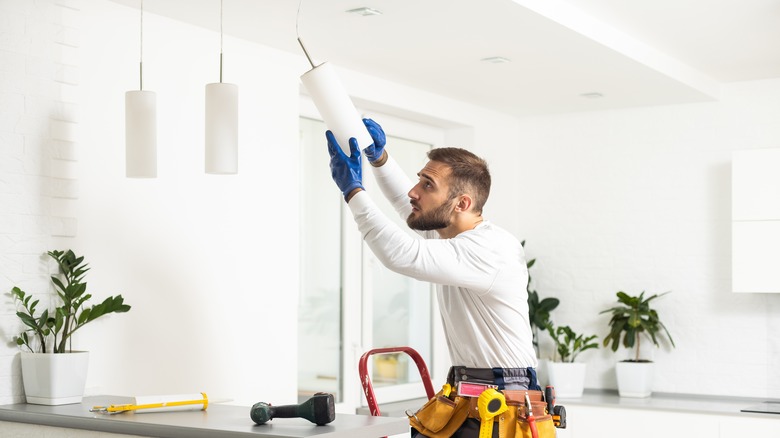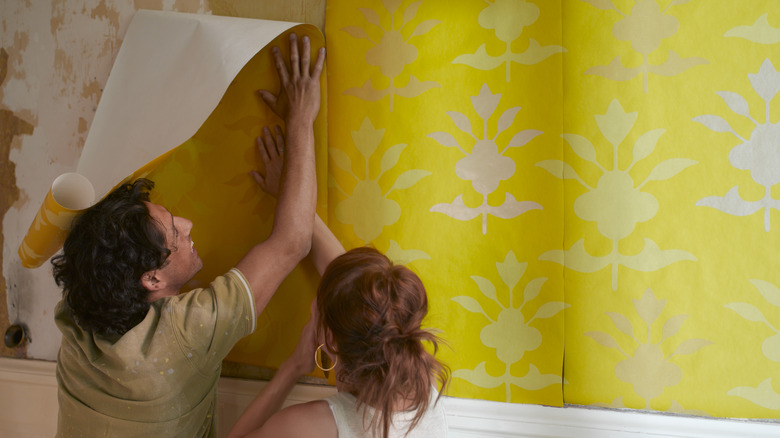The Reno Projects HGTV's Scott McGillivray Recommends Against DIY-Ing
DIY projects are homeowners' favorite thing to do. They come with many benefits, such as learning a new skill, transforming your home, and helping you save money. If you're a true DIYer, you know that almost anything can be turned into a DIY project. For example, you can use DIY paint hacks around the house to make painting any spot effortless. Or you can DIY a chic stool using a bucket and a few materials for $5.
Of course, there are also huge DIY renovation projects homeowners follow. However, HGTV's Scott McGillivray recommends avoiding large expert-level projects — such as electrical or plumbing systems — since they often cost more than you might have hoped. Beginner to intermediate DIY projects, including painting, assembling, taking down, or creating décor, are examples of what homeowners should stick to.
Unless you're an avid craftsman or you have the skill level to complete expert-level DIY projects. As a beginner, you don't want to risk getting injured or spending too much money, even if you have someone helping you complete a project.
Leave the big projects to the professionals
Making significant changes to your home by yourself can take a long time and cost a lot. Whether you want to install a kitchen island, change the tile, or make lighting changes, they all take a high level of expertise to do them right.
HGTV's Scott McGillivray told Modern Wellness Guide, "If you tackle projects that are beyond your capabilities and make mistakes it can end up costing you a lot more than hiring a professional would have." It's vital to start small to gain some skills that you can enhance over time with other projects. Changing your cabinet's knobs or painting a chair you thrifted are great starts.
If you're an intermediate DIYer, you might have done a few projects involving removing cabinets to add open shelving, installing a tile backsplash, or building an outdoor firepit. You've made your way up the ladder enough to start building things. Yet, projects that require a professional should be left to the professionals.
"Anything having to do with changes to electrical or plumbing systems," McGillivray stated. "These are not DIY projects and should only be attempted by licensed professionals." You want to avoid causing harm to yourself and your home. Plus, there's a chance you make matters worse, so if you feel that you should call a professional, call them.
DIY projects for every skill level
Even though there are renovations that professionals should handle, that doesn't mean you can't attempt other project types. For example, wallpapering a wall is excellent for adding color and contrast to any space. You can pick from hundreds of prints, patterns, and tones to fit your home's interior. Peel-and-stick wallpaper is popular among the DIY community — installing and removing it is quick and painless. You don't have to worry about damaging your wall underneath. Purchase peel-and-stick wallpaper or create your own design and add a meaningful touch to your home.
Another DIY project idea anyone could master is installing decorative molding in any room. McGillivray noted, "They really elevate the look of a house and add a sense of luxury." You can add different molding styles to the walls' top, middle, and bottom, adding texture, interest, and character to every room.
For example, if you have a farmhouse interior home, adding grid molding to your living room, bathroom, or dining room will amp up the style. It looks stunning behind a couch or end table — you won't have to find an art piece to display since the molding looks gorgeous on its own.



